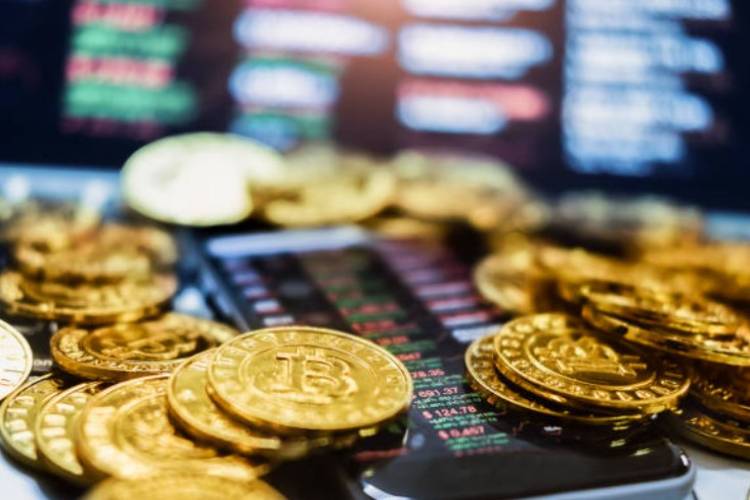
India crypto policy: India’s engagement with cryptocurrencies has been marked by hesitation and contradiction. Since Bitcoin and its peers captured global attention, policymakers in New Delhi have grappled with a dilemma: whether to allow free trade in these volatile assets or to shield citizens—many without the financial acumen to navigate such markets—from potential ruin.
After years of oscillation, the tone may finally be shifting.
Finance minister Nirmala Sitharaman’s recent remarks at a global finance forum signal a new openness. She acknowledged that cryptocurrencies and stablecoins are transforming global finance, adding that India must prepare to engage with them. For a country that has alternated between moral panic and fiscal opportunism, this marks the first clear hint of a policy thaw.
READ | Air India crash lawsuit puts Boeing under scrutiny
From blanket ban to tax clampdown
Since 2018, India’s crypto policy has been defined more by uncertainty than clarity. The Reserve Bank of India’s blanket ban on banks dealing with crypto entities was struck down by the Supreme Court in 2020, but that did little to legitimise the sector. The following year, the government drafted a bill proposing to criminalise all private cryptocurrencies — an idea that never reached Parliament but sent a chill through the market.
In 2022, the government introduced a harsh tax regime: a 30% flat tax on crypto income and a 1% tax deducted at source on transactions. Intended to curb speculation and monitor digital flows, the move instead triggered an exodus of entrepreneurs to friendlier jurisdictions like Dubai and Singapore. Trading volumes in Indian exchanges fell by as much as 90%.
Out of step with global trends
India’s cautious stance is now increasingly out of step with global regulatory momentum. The European Union’s Markets in Crypto-Assets (MiCA) law, which came into effect in 2024, mandates licensing for crypto issuers and service providers, imposes capital adequacy norms, and enforces full disclosure of reserves—especially for stablecoins. The UK has brought crypto assets under the umbrella of its broader financial regulatory framework, focusing on investor protection and anti-money-laundering oversight rather than prohibition.
Even the United States, despite its fragmented regulatory structure, is moving toward coherence. Political figures, including Donald Trump, have normalised the debate, signalling that the issue is no longer fringe. The message from advanced economies is clear: regulation should supervise, not suffocate.
India’s cautious approach to private cryptocurrencies contrasts sharply with its quiet embrace of a sovereign digital currency. The Reserve Bank of India’s pilot of the Digital Rupee (CBDC) marks an attempt to marry innovation with control. Unlike volatile private tokens, the e-rupee preserves monetary sovereignty while testing the efficiencies of blockchain technology in payments and settlements. This experiment reflects India’s instinct for a middle path—leveraging digital finance without surrendering regulatory authority. The CBDC, if integrated effectively with India’s digital public infrastructure, could offer a safer on-ramp to the future of money.
India can draw three lessons from these examples. First, ambiguity is riskier than regulation — it drives innovation offshore and fuels grey markets. Second, digital innovation can coexist with investor protection if accompanied by licensing, reserve disclosure, and audit requirements. Third, a coordinated architecture involving the finance ministry, RBI, SEBI, and the Financial Intelligence Unit is essential to avoid overlapping mandates.
Balancing innovation and prudence
Sceptics of crypto are not without reason. Extreme volatility has wiped out billions in investor wealth worldwide. Fraudulent schemes and “rug pulls” flourish in regulatory vacuums, while the risks of capital flight and money laundering remain real. With India’s uneven financial literacy, an unregulated crypto market could amplify harm.
Yet, to dismiss digital assets outright would be short-sighted. They are becoming part of the plumbing of global finance—from cross-border payments to asset tokenisation. India does not need to reinvent the wheel, but it must design one that fits its terrain.
Beyond regulation, a mature crypto policy could serve as a catalyst for India’s fintech and blockchain ecosystem. Over 450 Indian start-ups are exploring use cases in tokenised payments, logistics, and smart contracts, but many have shifted base to Dubai and Singapore due to policy uncertainty. A predictable framework could reverse this brain drain, attract venture funding, and deepen innovation in decentralised finance and Web3 applications. For an economy positioning itself as a global digital hub, crypto clarity is not indulgence—it is industrial policy.
Towards a pragmatic roadmap
A balanced approach would align India with global best practices while preserving financial stability. This could include:
- Mandatory registration of all exchanges and wallet providers under a unified digital asset authority.
- Regulatory sandboxes under RBI or SEBI supervision to test crypto products.
- A Digital Asset Regulatory Council, comprising representatives from the finance ministry, RBI, SEBI, and technology experts, to ensure coordinated oversight.
India’s instinctive conservatism on financial innovation is understandable. The country has witnessed the damage caused by speculative manias. But digital assets are no longer a passing fad; they are a growing component of global capital flows. Ignoring them is not prudence—it is paralysis.
The finance ministry’s evolving stance offers an opportunity to replace hesitation with leadership. If India can craft a regulatory framework that fosters responsible innovation while safeguarding consumers, it can position itself as a credible player in the emerging digital finance order. The choice is between being a cautious observer and an active architect of the next era of money.
Anil Nair is Founder and Editor, Policy Circle.

